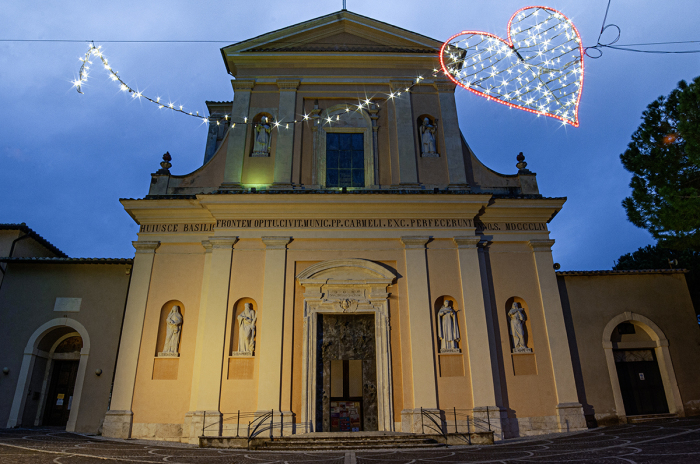Saint Valentine: The man behind the myth

Millions of couples in the United States will find many creative ways to express their love for one another today, which is also Ash Wednesday.
These offerings might include letters, candies, flowers, or even more commitment-based actions like a marriage proposal.
It is yet another Saint Valentine's Day, a date where many focus on that special someone in their lives. While such expressions tend to have a strong certainty to their existence, such certainty does not reside with the namesake of the holiday.
"There are several St. Valentines," said the Rev. Michael G. Witczako, associate professor of liturgical studies at The Catholic University of America, in a previous interview with The Christian Post.
"One was a bishop, another one was a priest and physician in Rome, who was known for sending letters of encouragement to stay faithful."
Apparently, there are multiple Saint Valentines that derive from early Church records and mythology. Speculation regarding the historical Valentine fueled the decision to remove Valentine from the "General Calendar" of the Catholic Church decades ago, Witczak told CP.
"St. Valentine was removed from the General Calendar in 1969 when the day was given to Sts. Cyril and Methodius, the apostles to the Slavs: St. Cyril died in Rome on Feb. 14," said Witczak. "However, St. Valentine is still included in the Roman Martyrology, and may be included in the calendar of particular churches or dioceses of religious orders."
The men behind the myth
The dominant legend behind St. Valentine, also rendered "Valentinius," was that he was a priest from the third century who lived in Rome and helped fellow believers during a wave of persecution.
Eventually, authorities under Emperor Claudius II arrested Valentine and beheaded him on Feb. 14, somewhere around AD 270, hence the date for Saint Valentine's Day.
Yet it was not until much later in AD 496 that Pope Gelasius officially marked the familiar date as Saint Valentine's Day.
Other legends abound regarding the largely uncharted life of Valentine, according to an entry on Catholic Online about the martyred figure.
"One legend says, while awaiting his execution, Valentinus restored the sight of his jailer's blind daughter," reads the entry.
"Another legend says, on the eve of his death, he penned a farewell note to the jailer's daughter, signing it, 'From your Valentine.'"
While the burial place of a St. Valentine has been discovered, some speculate that he might have been two different individuals, both martyred by Claudius near Rome.
The Catholic Church does lay claim to one of the Valentine's or the Valentine's skull, which is on display at the Basilica of Santa Maria in Cosmedin, Rome, according to an entry about Valentine on the History Channel's website.
"In the early 1800s, the excavation of a catacomb near Rome yielded skeletal remains and other relics now associated with St. Valentine," reads the entry.
"As is customary, these bits and pieces of the late saint's body have subsequently been distributed to reliquaries around the world. You'll find other bits of St. Valentine's skeleton on display in the Czech Republic, Ireland, Scotland, England and France."
A date of significance
Even as many celebrate St. Valentine's Day without thought to the story of the saint, and the Church has lowered its recognition of the figure, the date maintains its significance.
Witczak of Catholic University told CP that the date still involves the remembrance of saints, in this case, the more confirmed lives of Cyril and Methodius.
"Feb. 14 is the date of Sts. Cyril and Methodius, who are in the General Calendar as an obligatory memorial (all local Catholic churches are to celebrate these saints)," said Witczak, adding that "the church in the Slavic world has great devotion to Cyril and Methodius."
And then there are the many who send messages of love to their special someone on the day named for a mysterious saint who might have been more than one person.
"Valentine's Day is, of course, one of the great popular days among lovers to express their love to each other," said Witczak.
"The Church values human love and even has a sacrament that celebrates that love. ... So the day is important in the life of the Church because it is important to the people of the Church."




























